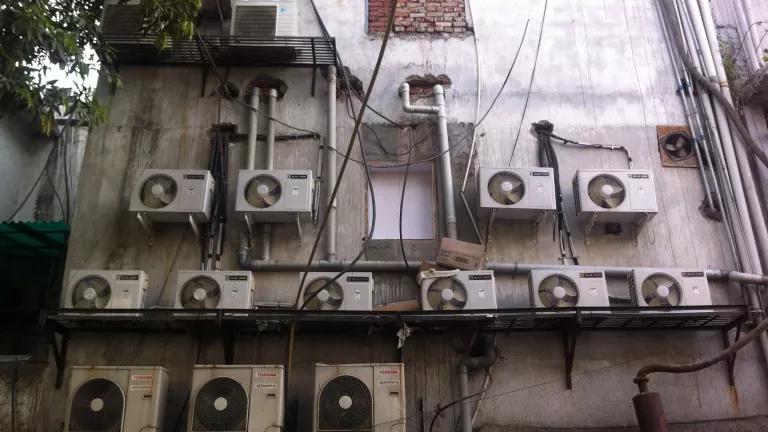Lenders: To Preserve Affordable Housing, Manage Climate Risk

Lower-income renters face significantly greater challenges from weather-related disasters than their wealthier counterparts, as the New York Times recently illustrated in reporting the stories of Ruth Ortiz, Brenda Jones, Vanessa Wharton, and other Texas residents living in rental housing when Hurricane Harvey hit two years ago. Unfortunately, the article is part of a disturbingly large body of work demonstrating how recovery funding favors financially better-off homeowners. This system needs to change to equally prioritize recovery funding for renters and homeowners (not to mention changes needed to provide timely support to homeowners).
Given the current prioritization of homeowners in post-disaster recovery, there is an urgent need for increased investment in pre-disaster preparedness in rental housing. This will reduce the amount of recovery resources required later on and help ensure that we are not losing valuable affordable housing units due to negligence in managing climate impacts.
The housing development and finance sectors are enormous, complicated industries that have only just started to respond to this issue.
On the housing finance side, three things need to happen:
- First, affordable housing lenders must understand how climate change threatens their financial and mission-related performance.
- Second, they must understand the options for mitigating those climate-related risks, including energy efficiency and other resilience measures.
- And third, they must determine how to adjust their internal processes to integrate climate risk management into their lending.
Fortunately, climate-resilient affordable housing is a hot topic at this week’s convening of community development financial institutions (CDFIs) hosted by Opportunity Finance Network, their national association. CDFIs are mission-driven private financial institutions that make investments in underserved people and communities.
One resource informing a climate resilience roundtable at the CDFI convening is a new discussion brief: Why Multifamily Affordable Housing Lenders Must Manage Climate Risks, and How to Start. The brief was developed by a climate resilience financing working group that was convened through the Sustainability in Affordable Housing Lender Learning Network, which is part of the Energy Efficiency for All initiative.
The discussion brief defines climate resilience; explains why it is critical to everyone with interests in real estate and particularly for those with an interest is preserving affordable multifamily housing; and proposes initial steps for how the multifamily sector can shift from a focus on post-disaster action to investing in proactive, pre-disaster resilience.
What does climate resilience mean for affordable housing?
Broadly defined, resilience is “the capacity of individuals, communities, institutions, businesses, and systems within a city to survive, adapt, and grow no matter what kinds of chronic stresses and acute shocks they experience.” As one aspect of this broader definition, climate resilience in the housing sector refers to the ability of homes to remain functional or recover quickly after a hurricane, wildfire, or other climate-related disruption.
Strategies for bolstering climate resilience in the housing sector include emergency preparedness planning from the regional level down to the single building level, building neighborhood-level green infrastructure such as rain gardens, updating processes for designing and building new properties, and upgrading individual existing properties to be more resilient.
Affordable housing lenders have a particularly important role to play in ensuring that new and existing properties they finance are built or upgraded to be climate-resilient. This means, for example, that critical equipment is elevated so as to be protected from flooding, moisture-resistant and healthy building materials are used to reduce the growth of mold after water exposure, and the property is as energy- and water-efficient as possible so as to be livable for longer when utility service is down.
Why should affordable housing lenders manage climate risks?
As mission-driven financiers, many CDFIs provide funding for high-quality and affordable housing. And they are recognizing that climate change is threatening to roll back progress they have made in building and preserving that housing. Some have seen residents forced to evacuate from damaged properties after natural disasters. Those properties need to be repaired, demanding time and resources that must be diverted from other opportunities.
The increasingly frequent and extreme natural disasters associated with climate change also threaten community development financiers’ ability to operate in the future. A reason being, for example, that a borrower with a housing property may struggle to pay back a loan if they are spending money on rebuilding while not receiving rental income because tenants have been evacuated. Given the thin operating margins on which most affordable housing properties operate, one disaster can financially devastate a property, leaving it in disrepair or to be turned into more expensive housing.
As the climate crisis continues to increase the frequency and severity of extreme weather events, those with financial interests in affordable housing assets ignore at their peril the potential financial consequences of climate change on their portfolios.
Where do we start?
Fortunately, significant progress has been made in mobilizing the resources available to increase the energy and water efficiency of multifamily affordable housing properties. Taxpayer- and utility customer-funded efficiency programs, such as those advocated for by Energy Efficiency for All, enhance the climate resilience of participating properties. Programs that expand access to renewable energy and energy storage do as well. The more these programs can extend support to non-efficiency or renewables resilience measures, the better.
Public and private entities such as Enterprise Community Partners, Center for Neighborhood Technology, New Ecology Inc., Precovery Labs, DNV GL, local agencies such as the D.C. Department of Energy and Environment, and federal agencies such as the U.S. Department of Housing and Urban Development are already supporting communities’ resilience planning and implementation.
Public resources are needed to support these efforts. But public dollars alone will not suffice. We need structural change in the housing finance industry to sufficiently manage climate risks. Bellwether Enterprise, one of the nation’s largest commercial and multifamily mortgage lenders, is on the vanguard of climate risk management. It has brought together individuals from various divisions into an internal Climate Risk Mitigation Working Group. Other housing lenders can establish their own such groups and connect with other organizations taking action by joining the Multifamily Climate Resilience Finance Working Group.
Climate-resilient multifamily housing properties benefit tenants and property owners as well as its lenders and investors. But they can also serve as pillars in a community’s overall system of social and physical infrastructure by maintaining operations and affordability through unpredictable shocks and stresses. Mission-driven affordable housing lenders and property owners must take climate risk into account to continue providing stability and opportunity to communities. The time is now to understand and manage climate risks to this critical sector.



